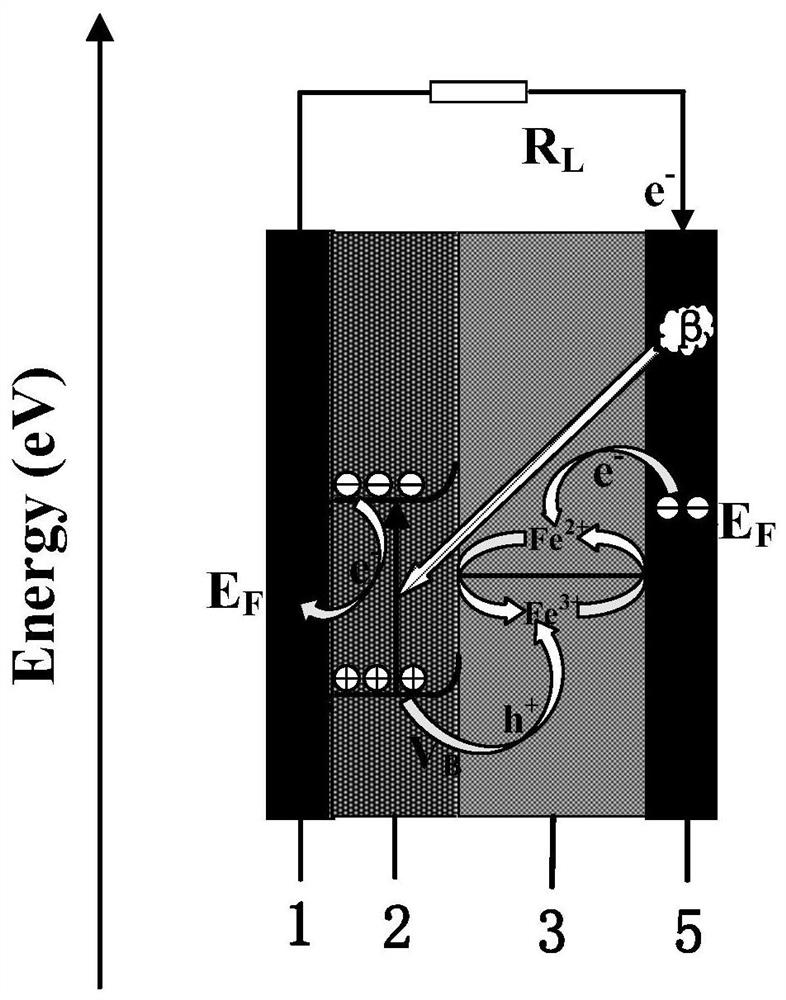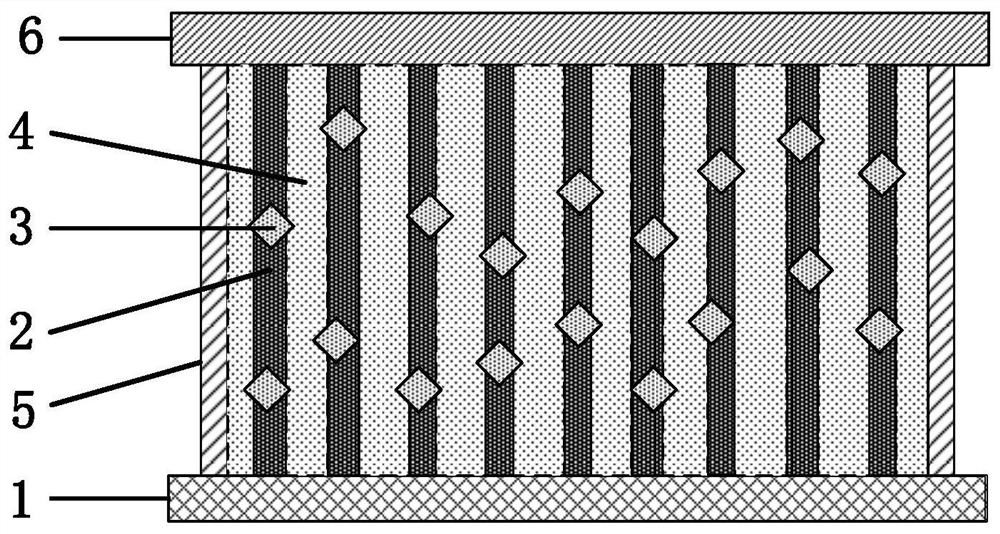Radioactive three-dimensional nano-structure radiovolt electrochemical cell
A three-dimensional nano-radioactive technology, applied in the application of radiation from radioactive sources, obtaining electrical energy from radioactive sources, and nuclear engineering, etc., can solve problems such as low energy conversion efficiency, small specific surface area of radiation sources, and radiation damage to semiconductor structures.
- Summary
- Abstract
- Description
- Claims
- Application Information
AI Technical Summary
Problems solved by technology
Method used
Image
Examples
Embodiment 1
[0047] The structure of the three-dimensional nanostructure radiative electrochemical cell of the present invention is as follows: figure 1 As shown, the battery structure includes: 1-FTO substrate electrode, 2-TiO 2 Nanorod array, 3-electrolyte, 5-tritiated titanium cathode, 4-sealed cavity.
[0048] In this embodiment, the titanium dioxide nanorod array film is formed by arranging highly ordered quadrangular columnar nanorods; the electrolyte contains Fe 3+ / Fe 2+ The inorganic aqueous solution of the redox pair is filled in the three-dimensional nanospace of the titanium dioxide nanorod array; the cathode material is a tritiated titanium metal target electrode, and the substrate electrode is FTO conductive glass (surface square resistance 8Ω / cm 2 ).
[0049] The preparation method of the radiant electrochemical cell described in this embodiment comprises the following steps:
[0050] (1) Preparation of titanium dioxide nanorod array film: FTO conductive glass is used as...
Embodiment 2
[0056] Such as image 3 As shown, on the basis of Example 1, this embodiment modifies zirconia nanoparticles on the surface of titania nanorod arrays, and the specific sensitization process is as follows: an appropriate amount of ZrO(NO 3 ) 2 Dissolve in deionized water, then add a certain amount of polyethylene glycol, then ultrasonicate the mixed solution for 30 minutes, add an appropriate amount of ammonia solution drop by drop, until the pH of the reaction solution is 9, and cover the back of the prepared sample with polytetrafluoroethylene tape Seal it to prevent it from depositing on the surface of the conductive glass, then put it into the reaction solution for a certain period of time, take it out, remove the tape and rinse the sample with deionized water, put it in a constant temperature drying oven to dry for 12 hours, and then put it in a clean petri dish for sealed storage , The encapsulation process of the voltaic electrochemical cell is as described in Example 1...
PUM
| Property | Measurement | Unit |
|---|---|---|
| Diameter | aaaaa | aaaaa |
Abstract
Description
Claims
Application Information
 Login to View More
Login to View More - R&D
- Intellectual Property
- Life Sciences
- Materials
- Tech Scout
- Unparalleled Data Quality
- Higher Quality Content
- 60% Fewer Hallucinations
Browse by: Latest US Patents, China's latest patents, Technical Efficacy Thesaurus, Application Domain, Technology Topic, Popular Technical Reports.
© 2025 PatSnap. All rights reserved.Legal|Privacy policy|Modern Slavery Act Transparency Statement|Sitemap|About US| Contact US: help@patsnap.com



